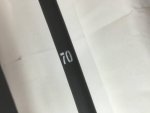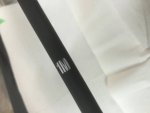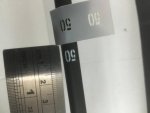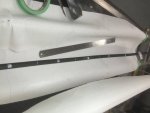AshleyBarker
Member
We repair a particular type of medical device. As part of that, we sometimes remove the old coating on the device and relabel and re coat the device. Currently we use a stencil system which works but it doesn't give results as good as the manufacturers original and sometimes can be a little hit and miss. We have also tried silkscreening but it was a messy process and not terribly successful. We know nothing about printing. I've seen digital printers for printing pens and I'm wondering if this could be a successful way to achieve the print. Can you buy just the print head and we could make an apparatus that can drive it up and down our existing recoating apparatus? I'm also wondering if pad printing could be a good option. It doesn't matter if it isn't very fast as these repairs are quite lucrative but I would like to get good results. See attached pictures to give you some idea of what it looks like. The tube is about 1m long and there are numbers printed at increments along the tube and each number is printed 4 times (90 deg increments) around the tube at each position. If you think you would have the knowledge to advise us on the way we should be doing this, please contact us.













